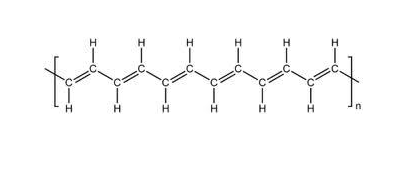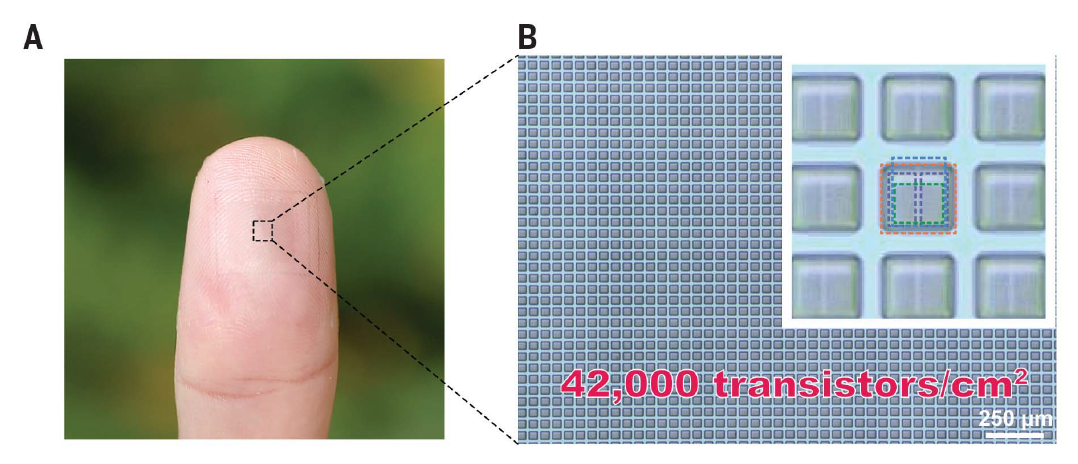【Message from the editor: Is scientific research related to scientists only? Do you also want to know what happens at labs? Researchers form International Campus will tell science stories in plain language, so that academic research can be accessible to you and me.Today, Dr PENG Boyu will tell a story about flexible electronics. In 2016, Dr PENG Boyu completed his PhD degree with Outstanding Thesis Award in Mechanical Engineering from The University of Hong Kong. He then worked as a postdoctoral fellow at the same department before he joined ZJU in July, 2020. His research focuses on flexible electronics, including flexible logic circuits, flexible sensing, and flexible display.】

If you go back to a century ago when Thomas Edison and Nikola Tesla were competing on electricity transporting technology, and ask if paper, cloth or plastic materials could transport electricity instead of using expensive metals, it would be a ridiculous first impression you made to them.
However, this “ridiculous illusion” became true in the 1970s. Prof. Alan J. Heeger from UC Santa Barbara, Prof. Alan G. Macdiamid from University of Pennsylvania, and Prof. Hideki Shirakawa from University of Tsukuba together discovered that halogen-doped polyacetylene plastic exhibited electrical conductivity that is comparable with metals. A brand new organic electronic research field was thus initiated. Three professors shared the 2000 Nobel Prize in Chemistry based on this pioneering collaborative work.

Figure 1. (a) Molecular structure of polyacetylene.

Figure 1. (b) Photos of the three Nobel laureates
Compared with the brittle metals and silicon, organic materials emerge by their flexibility. Flexible electronics based on organic conductor/semiconductor materials are trying to develop make future electronic devices soft, light, conformal, and even make them wearable, printable and stretchable. Prof. Takao Someya and his team in U of Tokyo develop light-weight organic logic circuits (Figure 2) so that people don’t need to worry about the dropping and damaging of their devices. Prof. BAO Zhenan from Stanford has demonstrated that thousands of flexible transistors could be integrated in a smaller area than a fingernail (Figure 3). The transistors remained intact even being stretched by twice in length, which truly realized the “intelligent skin” in science fictions. Prof. J. A. Rogers from Northwestern focus on flexible electronics in life and health. The flexible, portable and low-power-consumption circuits could be attached on skins or even be subcutaneous implanted. Real-time monitoring of physical and bio-chemical signals could be achieved, which is significant for early diagnosis and therapy of diseases. These flexible electronic applications have upended our understanding on electronic device and broadened the applications scopes.

Figure 2. Flexible circuits that is as light as a feather.

Figure 3. Flexible stretchable transistor arrays.

Figure 4. Flexible sensor circuits attached on human skin.
About the research center and the team: Prof. LI Hanying leads a research team in the International Research Center for Functional Polymers. The team focuses on utilizing organic single-crystalline materials in flexible organic electronics that could simultaneously keep the flexible integrity of organic materials and benefit from the regular and pure integrities from single-crystalline materials. The team has developed a series of distinguished research areas including organic single-crystalline heterojunctions, organic complex single crystals, and two-dimensional organic single crystals. With breakthroughs that our team has made in flexible logic circuits, organic photovoltaic and photo detectors, we are delighted to contribute to the development of flexible electronics toward daily lives.
Article: PENG Boyu
Editor: SUN Xiaolei





